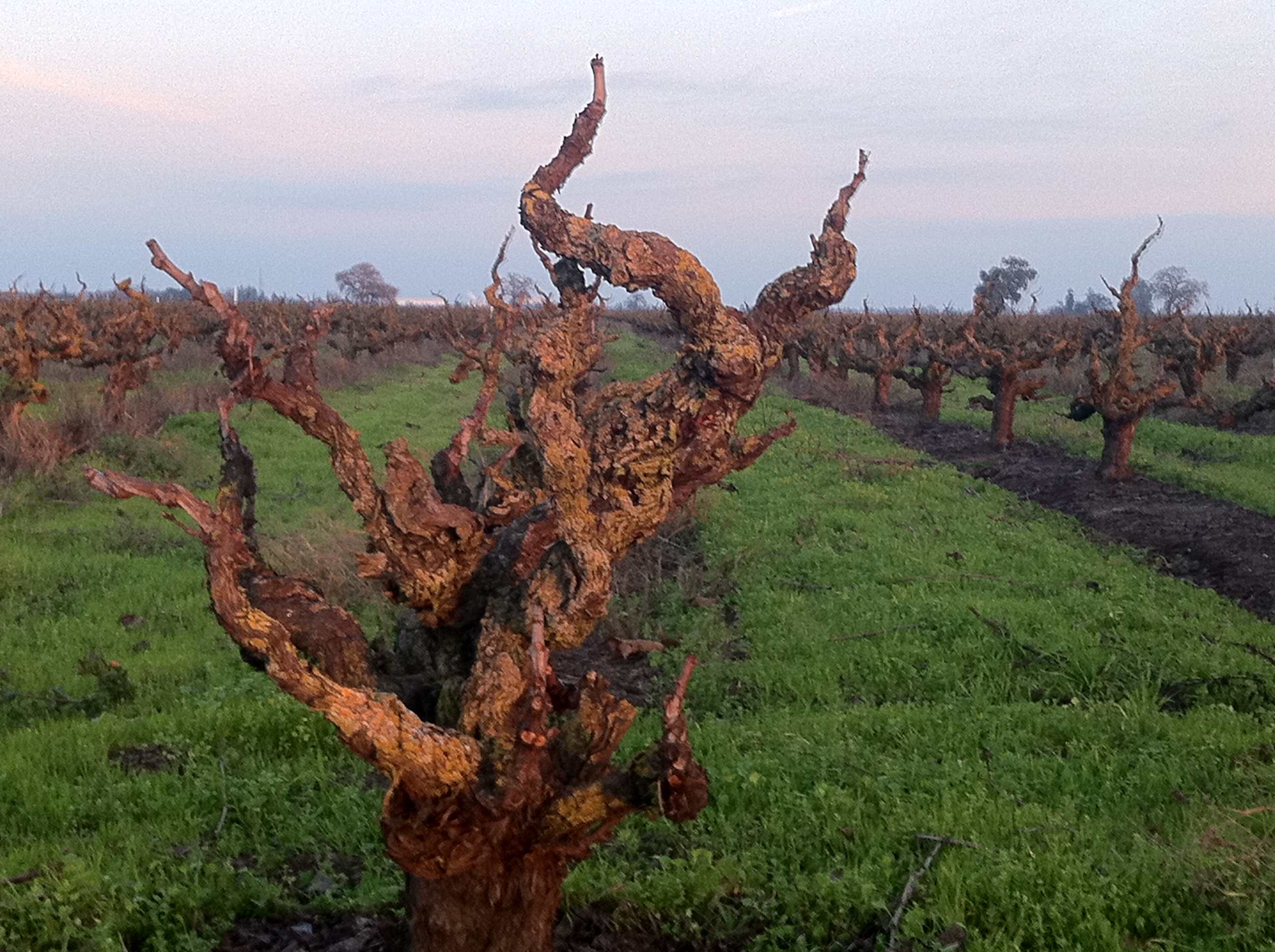Recently, while on our way back to the Bay Area from Sacramento, we made a stop in Lodi, which is a small AVA northeast of the Bay Area, to do some wine tasting. Lodi is most acclaimed for its Old Vine Zinfandels. It was a beautiful winter day so, between wineries, we stopped to take some photos of the vineyards. One of the things I appreciate about the “wine lifestyle” is the opportunity to see the seasons manifest in the vineyards. And, unless we taste at urban wineries, the vineyards and the surrounding countryside always provide such a beautiful backdrop to wine tasting.
Certainly, the vineyards are beautiful in spring and summer when in full bloom, but I also find something hauntingly majestic about vineyards when they are at rest in the winter. There is a stark contrast between gnarly “Old Vines” as pictured below, and the neatly trellised vines so often seen in wine country.

While there, we bought a bottle of 2008 Klinker Brick Old Vine Zinfandel (Vines average 85 years old – I’d say that qualifies 😉
I think it’s important to note there is no objective definition of “Old Vines”. When I’ve posed the question at wineries that produce Old Vine Zinfandel, the most consistent answer has been vines more than 40 years old (at least here in California). That sounds about right to me. And that’s my personal standard for evaluating whether a wine with the “Old Vine” designation is a pretender or a contender.
So what’s the difference between Old Vines and young vines? According to Matt Kramer of Wine Spectator…
“The deep roots of old vines are their greatest asset. In a rainy harvest, a young vine’s shallow root system sucks up surface water, bloating the grapes and diluting the juice. Yet old vines are often surprisingly unaffected, as their deeper roots are untouched by the passing rainstorm. And in drought conditions those same deep roots can tap into water reserves in the subsoil unreachable by younger vines.“
That deep root system also results in consistent production of evenly ripened grapes from vintage to vintage. And presumably Old Vines produce smaller yields which results in wines of greater structure, concentration, and complexity. Some would say Old Vines wines also age better, developing a more layered complexity over time. Unfortunately, I may never know. Whenever I purchase an Old Vines wine it never lasted longer than a couple of years in my cellar!
I believe Old Vines can make a positive difference provided the vines are in a good site, and the winemaker skillfully makes the wine. What do you think? Have you had wine sourced from “Old Vines”?
Cheers!
You might also be interested in:
If It Says “Old Vines,” Will You Buy? (Wine Spectator)
Old Vines, What’s the big deal? (Barossa Dirt…True Tales and Twisted Vines)
Make sure to open up the bottle and let it breathe alot for Klinker Brick. I is a lovely wine but needs to breathe otherwise you will taste no fruit or dirt just the alcohol. I did a tasting and pairing on this a few weeks back with my 1 bottle 2 meals series. Let me know what you think. I look forward to your tasting notes!
Thanks for the tip! Will do!